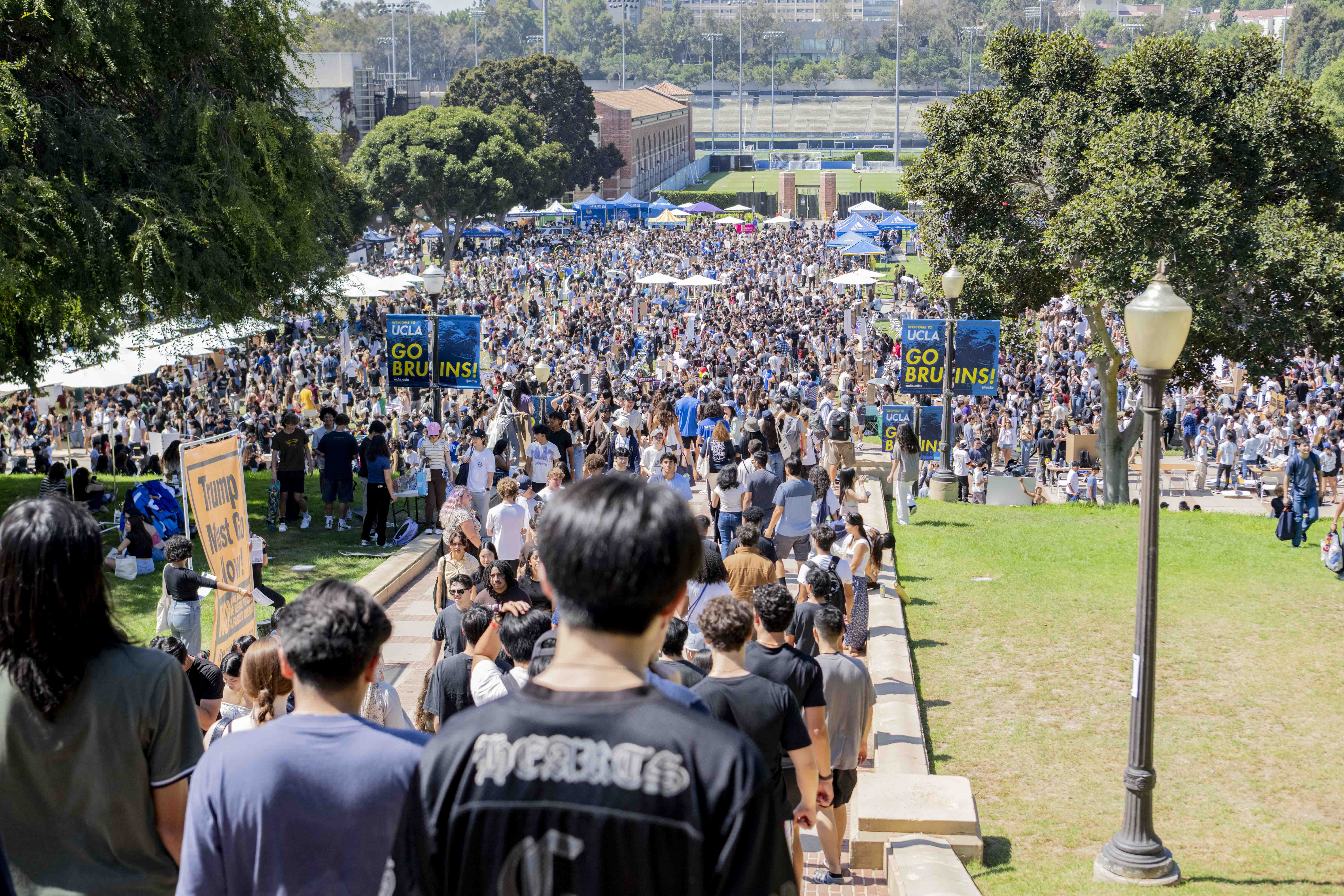When I told a classmate I committed to UCLA, she bluntly said, “Have fun in your 300-person lectures.” Her words didn’t make me regret my choice, but they did reignite my concerns about attending a big public university. Would I simply disappear into a crowd of over 33,000 undergraduates (half the size of my hometown!) and become another faceless number?
Now, as a junior, I can reflect on the highs and lows of attending a large university with the wisdom of a newly minted upperclassman. Hopefully, my experience will provide you with insight into whether a big school is the right fit for you and tips on how to succeed at these larger institutions.
The Good
Extracurriculars: In high school, choosing a book club wasn’t exactly a choice—there was only one. At UCLA, I had to decide between dozens of clubs that catered to every genre, identity, and commitment level. In fact, UCLA has over 1,200 clubs and student organizations, including recreational sports, cultural groups, and religious organizations. At a big university, you’ll never run out of extracurricular options, making it easy to find your niche. With the abundance of clubs, I recommend shopping around before the aptly named Enormous Activities Fair, using the Student Organization, Leadership, and Engagement website to learn about the opportunities and narrow your search. It is also important to explore different clubs: Attend a first meeting or info session, even if you’re just curious, because you never know where that first step might take you.
Professors: With their size, funding, and reputation, large public universities attract many leading scholars, including many Nobel or Pulitzer Prize winners. While this advantage varies based on school prestige, location, and funding, the chance to learn from world-class professors is a significant benefit of attending a large public university. To get to know these brilliant scholars, take their courses, and regularly attend office hours. (Bonus: if you read their books or familiarize yourself with their research, this will be a very flattering touch.)
Sports: While I’d never watched an entire sporting event before college, I even got swept up in UCLA’s blue and gold stadium crowds. Large public universities often have the resources to support competitive athletic programs, and many belong to major conferences, like the Pac-12, Big Ten, or SEC. For many students, this sense of shared pride and school spirit becomes a major highlight of college life. At UCLA, the Den Pass is a student season ticket for football and men’s basketball, priced around $165–$185 for the year. While it’s a great value if you attend lots of games, spots are still first-come, first-served, and it may not be worth it if you’re not a regular sports fan. Even if you pass on the Den Pass, you can still attend men’s basketball and football games by purchasing tickets, and all other sporting events are free to UCLA students.

The Bad
Competition: While there are more opportunities at large public universities, the sizable student population means competition for those coveted spots. Every UCLA student has heard the horror stories of clubs with acceptance rates lower than the university itself or the star student who was rejected from fifteen clubs. While participating in these exciting opportunities is not impossible, and the level of competition varies based on the position, attending a large university means you might have to fight a little more for your share of the pie. One tip that helped me was remembering that it is okay to start small. Becoming club president or joining that highly selective consulting club may not happen in your first quarter, but there are plenty of smaller, less competitive roles available that can help you build skills and experiences. Rejection is common, but it’s not the end—it’s a chance to learn, reapply, and grow. With persistence, each attempt will bring you closer to your goals and strengthen your application capabilities.
Class Size: Coming from a small public school, the idea of attending a lecture with hundreds of students was daunting. Receiving individualized attention or even having the professor learn your name seemed impossible. While direct attention is rarer in these large lectures, office hours and discussion sections are a simple way to build real connections—if you put in the extra effort. In addition, to make big lectures themselves feel more manageable, I recommend sitting up front, as it allows you to create a more personal connection with the professor and remain engaged.
The Bruin Bonus
Research: Nearly half of UCLA undergrads participate in research, and with over 6,000 active projects, there’s something for everyone. Getting to work alongside faculty on research is an incredible opportunity that is often only found (and in such abundance) at large research institutions, such as UCLA. By developing strong relationships with professors and actively inquiring about opportunities, many friends and I secured research positions with faculty members. For my more STEM-inclined readers, attending research fairs, sending cold emails, joining research-dedicated clubs, and networking can all be great ways to snag those research opportunities.
City Life: Although located in a city of nearly four million, UCLA retains that classic college feel, cradled by the three Bs (Beverly Hills, Bel-Air, and Brentwood) and Westwood Village. It’s a true campus bubble—but with the benefits of a major city in proximity. Clubs, ranging from backpacking to church groups, frequently offer coordinated off-campus trips that are an easy way to explore the city and meet new friends. In addition, through the U-Pass, Bruins have fare-free access to selected transit agencies throughout the county, allowing for unlimited rides on local buses serving UCLA. While the bus routes can be a bit tricky to navigate at first, this option is an affordable way to see all the great sights and venture out of the Westwood bubble.
The Takeaway
Every type of university—big or small, public or private—has its list of pros and cons. What matters isn’t finding the “best” school but finding the best fit. Large universities offer incredible opportunities, but they also require you to be proactive: seeking out community, making the first move with professors, and navigating competition.

For me, UCLA’s combination of undergraduate research opportunities, school spirit, and city life made that challenge more than worth it. But your right fit might look different, and that’s totally okay. Think about what you want (whether that’s close faculty mentorship, endless extracurriculars, or a great football team), the environments that help you succeed, and what trade-offs you are willing to accept.
At the end of the day, there’s no single right choice in colleges. There’s only the place you’ll thrive, and through internal and external research, I’m confident that you will find the college that puts you on the path to success.



